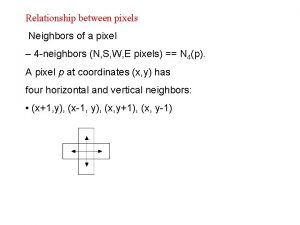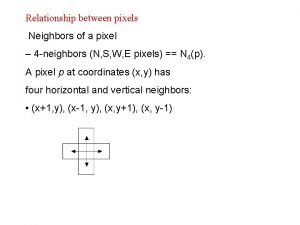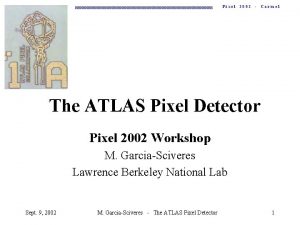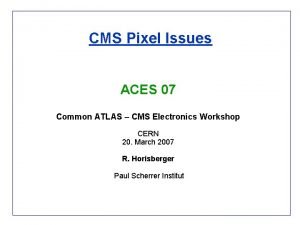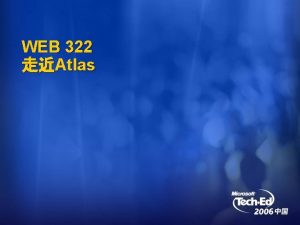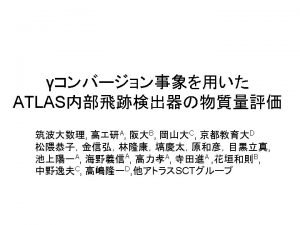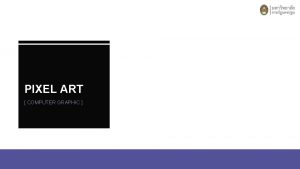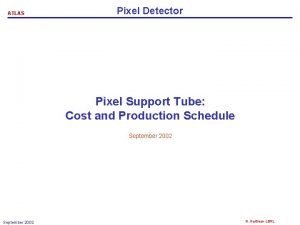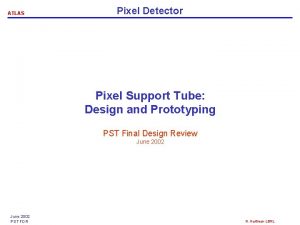Phase 2 pixel challenges ATLAS and CMS phase








- Slides: 8


Phase 2 pixel challenges ¡ ATLAS and CMS phase 2 pixel upgrades very challenging ¡ Very high particle rates: 500 MHz/cm 2 ¡ Hit rates: 1 -2 GHz/cm 2 (factor 16 higher than current pixel detectors) ¡ Smaller pixels: ¼ - ½ (25 – 50 um x 100 um) ¡ Increased resolution ¡ Improved two track separation (jets) ¡ Participation in first/second level trigger ? A. 40 MHz extracted clusters and shape (outer layers) ? B. Region of interest readout for second level trigger ? ¡ Increased readout rates: 100 k. Hz -> 1 MHz ¡ Low mass -> Low power ¡ Very similar requirements (and uncertainties) for ATLAS & CMS ¡ Unprecedented hostile radiation: 10 MGy(1 Grad), 1016 Neu/cm 2 ¡ Hybrid pixel detector with separate readout chip and sensor. ¡ Phase 2 pixel will get in 1 year what we now get in 10 years ¡ Pixel sensor(s) not yet determined ¡ Planar, 3 D, Diamond, HV CMOS, , , ¡ Possibility of using different sensors in different layers ¡ Final sensor decision may come relatively late. ¡ Very complex, high rate and radiation hard pixel readout chips required ATLAS HVCMOS program 2

RD 53 collaboration recently approved by LHCC ¡ Similar requirements, same technology choice and limited availability of rad hard IC design experts in HEP makes this ideal for a close CMS – ATLAS RD collaboration ¡ Even if we do not make a common pixel chip ¡ Initial 2 day workshop between communities confirmed this. ¡ Workshop: http: //indico. cern. ch/conference. Display. py? conf. Id=208595 ¡ Forming a RD collaboration has attracted additional groups and collaborators ¡ Synergy with CLIC pixel (and others): Technology, Rad tol, Tools, etc. ¡ Institutes: 17 ¡ ATLAS: Bonn, CERN, CPPM, LBNL, LPNHE Paris, NIKHEF, New Mexico, RAL, UC Santa Cruz. ¡ CMS: Bari, Bergamo-Pavia, CERN, Fermilab, Padova, Perugia, Pisa, PSI, RAL, Torino. ¡ Collaborators: 99, ~50% chip designers ¡ Collaboration organized by Institute Board (IB) with technical work done in specialized Working Groups (WG) ¡ Initial work program covers ~3 years to make foundation for final pixel chips ¡ Will be extended if appropriate: A. Common design ? , B. Support to experiment specific designs 3

Name RD 53 CHIPIX 65 R. Beccherle Eng. Designer 30% - Responsabile WP 2 R. Bellazzini Phys. FERMI-GLAST L. Fanucci * Engineer Prof F. Morsani Eng. Designer 25% G. Magazzù Eng. Designer 30% M. Minuti Eng. FPGA expert F. Palla Phys. CMS A. Rizzi * Phys. CMS S. Saponara * Engineer Prof M. T. Grippo Ph. D Student K. Androsov Ph. D Student S. Donato Ph. D Student RD 53 e CHIPIX 65 * Also Pisa University 20% 10%







